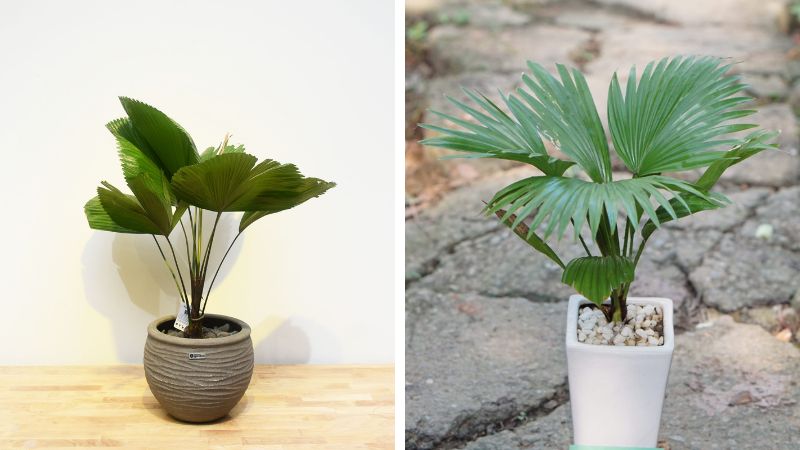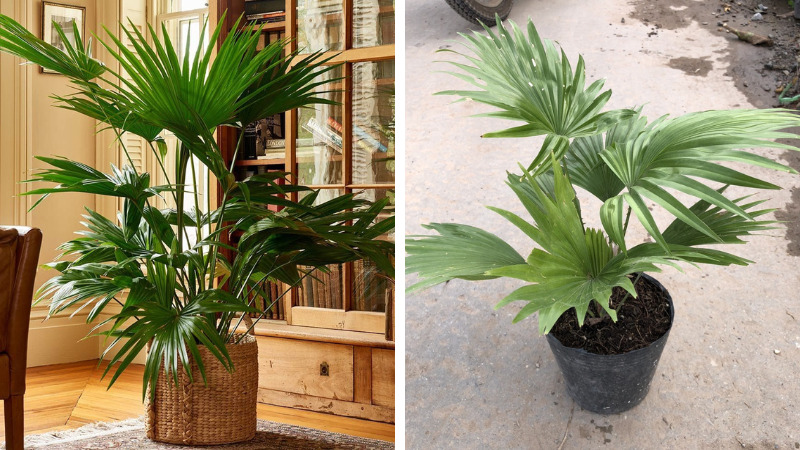The Chinese Fan Palm, or Livistona chinensis, commonly known as the Cọ Ta palm in Vietnam, is a popular choice for indoor greenery and has become increasingly prevalent throughout the country. Let’s delve into the world of this ornamental plant and discover its origins, unique characteristics, and the myriad benefits it offers to those who care for it.
1 What is the Cọ Ta Palm?
Origin and Significance of the Cọ Ta Palm
 What is the Cọ Ta Palm?
What is the Cọ Ta Palm?
Native to southern China, the Cọ Ta palm, also known as the Chinese Fan Palm or the Dwarf Palm, is a member of the Arecaceae family. This versatile plant thrives in tropical climates and has been cultivated in various regions.
Characteristics and Classification of the Cọ Ta Palm
 Characteristics of the Cọ Ta Palm
Characteristics of the Cọ Ta Palm
The Cọ Ta palm is a sun-loving plant that also tolerates partial shade, making it ideal for both indoor and outdoor cultivation. However, when kept indoors, ensure it receives ample natural light. This palm is characterized by its short stature, adorned with sharp spines and scars left by fallen old leaves. Its distinctive fan-shaped fronds with deep lobes and pointed tips emerge from a central crown.
2 Benefits of the Cọ Ta Palm
 Benefits of the Cọ Ta Palm
Benefits of the Cọ Ta Palm
Beyond its aesthetic appeal, the Cọ Ta palm boasts practical advantages. Its expansive, lush foliage not only delights the eyes but also purifies the air and acts as a barrier against external pollutants, contributing to a healthier living environment.
In addition to its decorative value, the Cọ Ta palm holds symbolic significance in Vietnamese culture. Its unique shape, with leaves clustered at the base and reaching skyward, is believed to attract good fortune and prosperity. For this reason, it is often displayed near entrances or gateways.
From a feng shui perspective, the Cọ Ta palm is compatible with all birth elements, especially for those with Earth and Metal elements. It is said to bring career and financial blessings to those with these elements while warding off negative influences.
3 Growing and Caring for the Cọ Ta Palm
 Caring for the Cọ Ta Palm
Caring for the Cọ Ta Palm
Planting the Cọ Ta Palm at Home
Propagation: The Cọ Ta palm can be propagated through seed germination or by transplanting young saplings.
Choosing a Pot: Select a pot made of breathable material that facilitates drainage and heat dissipation. Ensure the pot is proportionate to the size and shape of the plant.
Soil: Opt for loamy soil enriched with organic matter and good drainage. Place gravel or large clay pieces over the drainage holes to prevent soil from escaping while allowing excess water to drain.
Caring for the Cọ Ta Palm
While the Cọ Ta palm is relatively low-maintenance, here are some considerations for optimal growth:
- Light: As a sun-loving plant, ensure it receives ample natural light. If kept indoors, regularly move it outdoors to soak up morning and evening sunlight.
- Watering: Moisture is essential for this plant. Water it at least once a day, increasing to three times during dry spells. Avoid overwatering, and only moisten the soil sufficiently.
- Soil: For the best growth, mix loamy soil with organic compost to provide extra nutrients. Supplement with NPK fertilizer mixed with organic fertilizer once a month to maintain lush foliage.
Notes on Growing and Caring for the Cọ Ta Palm
When potting the plant, avoid compacting the soil too tightly to prevent root damage.
If your Cọ Ta palm is in a low-light area, ensure it receives 2-3 hours of direct sunlight daily, preferably in the morning and evening.
Maintain slightly moist soil, as overwatering can lead to root rot and eventual plant death.
4 Captivating Captures of the Cọ Ta Palm
 Cọ Ta Palm as an Indoor Decoration
Cọ Ta Palm as an Indoor Decoration
 Cọ Ta Palm as an Elegant Ornament
Cọ Ta Palm as an Elegant Ornament
 Cọ Ta Palm as a Gift or Decorative Accent
Cọ Ta Palm as a Gift or Decorative Accent






































